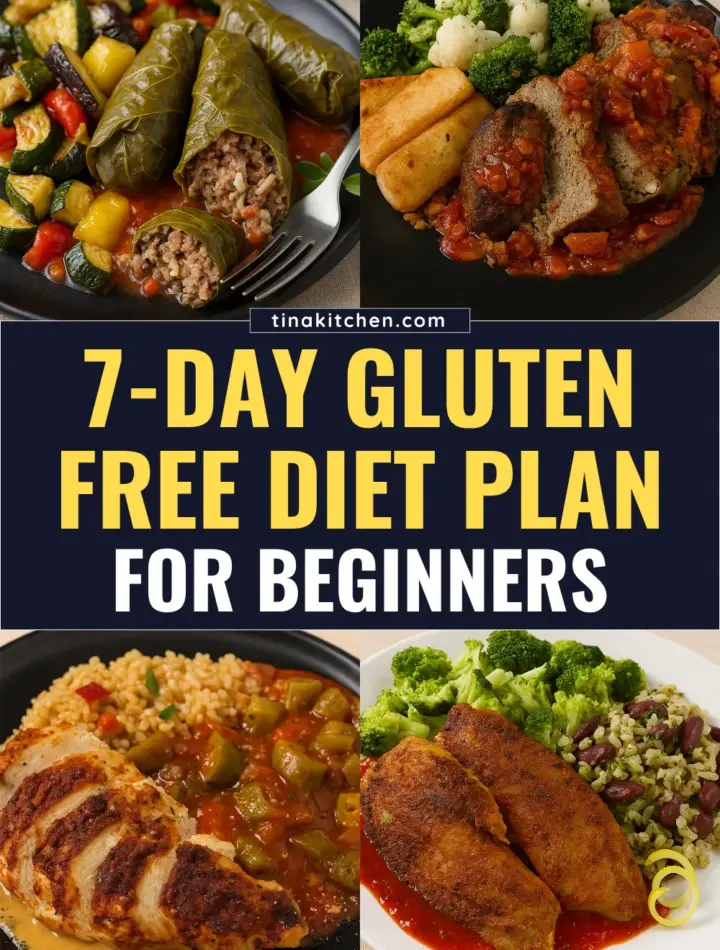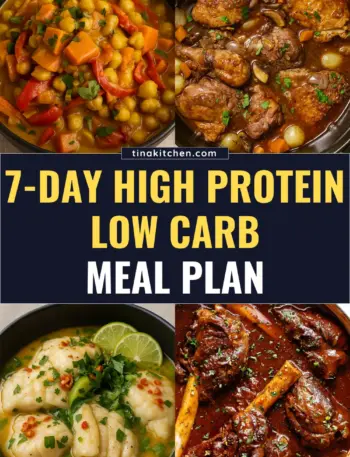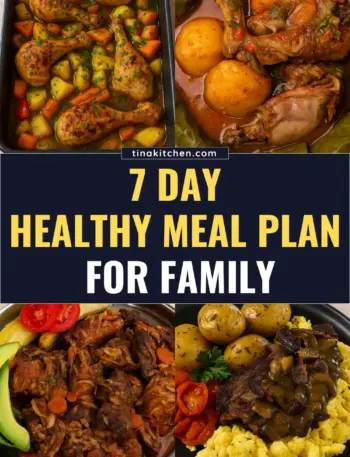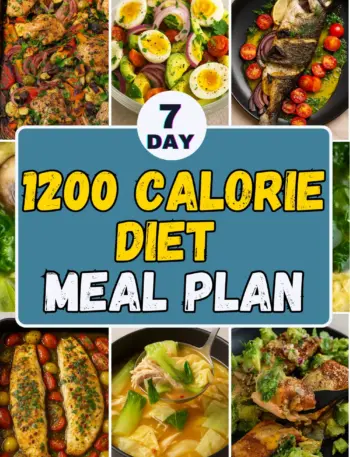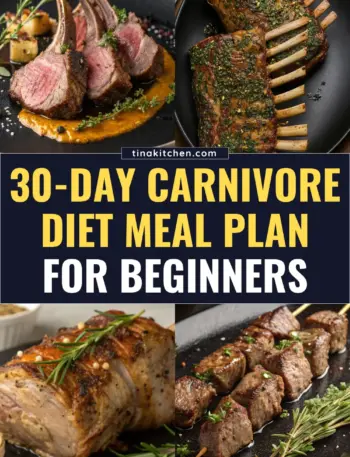This post may contain affiliate links, meaning I may earn a commission if you make a purchase, at no extra cost to you. I only recommend products I trust. Thank you for your support.
Table of Contents
What is a Gluten Free Diet?
A gluten free diet is an eating plan that completely avoids gluten, which is a protein found in wheat, barley, rye, and their crosses (like triticale), and foods made from these grains.
A gluten free diet plan is essential for people with celiac disease, an autoimmune condition where eating gluten causes damage to the small intestine.
It’s also recommended for those with non-celiac gluten sensitivity (sometimes called gluten intolerance) or a wheat allergy, who may have symptoms like bloating, diarrhea, or fatigue after consuming gluten.
Common foods that contain gluten include bread, pasta, cereals, baked goods, malt (found in beer and sauces), and many processed items.
In this guide, we’ll explain who needs to follow a gluten free meal plan, and also provide you with easy gluten free meals for breakfast, lunch, dinner, and snacks for each day of the week.
We shall also provide you with a comprehensive list of all gluten free foods, as well as foods that may trigger symptoms in people with celiac disease or gluten sensitivity, so you know exactly what to avoid.
Why Follow a Gluten Free Diet Plan?
For people with celiac disease or gluten sensitivity, a gluten free diet is medicine as it relieves symptoms and heals the body.
As explained by experts, continuing to eat gluten with celiac disease triggers an immune reaction that damages the small intestine over time.
Removing gluten can help relieve more than 250 different symptoms related to celiac disease, many of which affect daily comfort and long-term health.
Here are some of the most common:
- Fatigue: Persistent tiredness that doesn’t improve with rest. This often happens because gluten damages the gut, reducing nutrient absorption. A gluten free diet can help restore energy levels.
- Gastrointestinal Distress: Digestive issues such as diarrhea, constipation, bloating, gas, and abdominal pain are classic symptoms of gluten intolerance and celiac disease. Eliminating gluten often brings fast relief.
- Joint and Muscle Pain: Gluten can trigger inflammation that leads to stiffness, aching joints, and muscle pain. Gluten free foods often reduce this inflammation and improve mobility.
- Headaches and Migraines: Chronic headaches or intense migraines are common but often overlooked signs of gluten sensitivity. Many people notice fewer or less severe headaches after removing gluten.
- Iron Deficiency Anemia: Gluten damage in the small intestine can interfere with iron absorption, leading to anemia. A gluten free diet helps heal the gut so the body can properly absorb iron again.
- Psychological Symptoms: Depression, anxiety, irritability, and “brain fog” (trouble focusing or thinking clearly) are frequently linked to gluten-related conditions. Many report mental clarity and improved mood once gluten is removed.
- Dermatitis Herpetiformis: A painful, itchy skin rash that looks like clusters of blisters. This is directly linked to gluten exposure in people with celiac disease, and a gluten free diet plan is the only way to prevent flare-ups.
- Osteopenia and Osteoporosis: Untreated celiac disease can cause poor calcium and vitamin D absorption, leading to weakened bones. A gluten free diet allows nutrients to be absorbed properly, helping protect bone health.
- Weight Changes: Both unexpected weight gain and unexplained weight loss can occur with celiac disease due to poor nutrient absorption or inflammation. A gluten free diet helps restore balance and promote a healthy weight.
- Peripheral Neuropathy: Nerve-related symptoms such as tingling, numbness, or burning in the hands and feet can be tied to gluten-induced nerve damage. Healing the gut with gluten free meals may help relieve these sensations.
- Reproductive Health Problems: Unexplained infertility, irregular cycles, or pregnancy complications can sometimes be linked to gluten-related damage. A strict gluten free diet can improve nutrient balance and reproductive wellness.
7 Day Gluten Free Meal Plan (Gluten Free Meals)
This gluten free meal plan features easy, whole gluten free meals for breakfast, lunch, dinner, and snacks, designed specifically for seniors with celiac disease or gluten sensitivity.
If you’d like to get these meals delivered to your door each week, use my exclusive link below to enjoy free shipping.
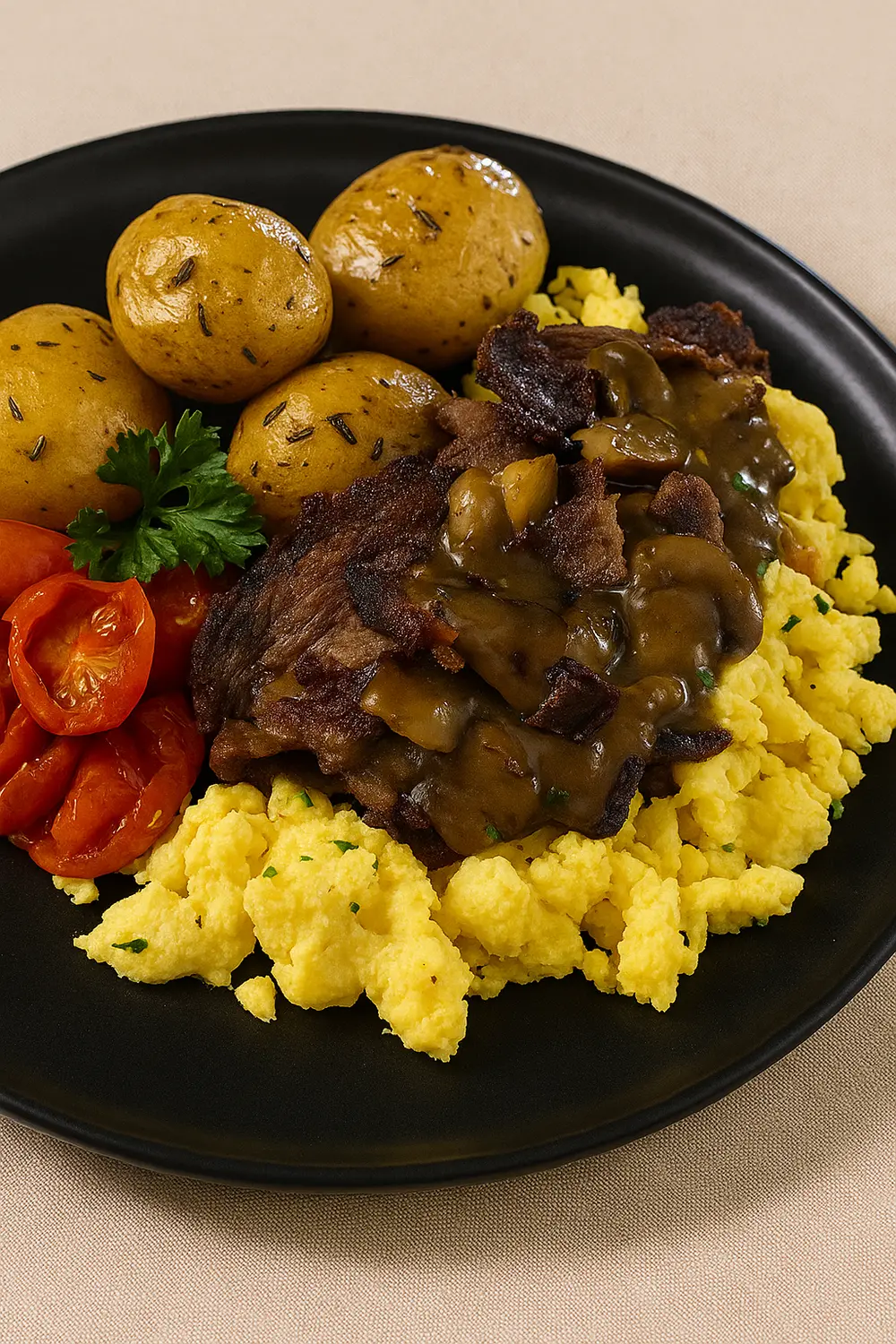
Day 1
Breakfast:
- Steak and Egg Scramble: A healthy gluten free breakfast featuring tender slow-cooked steak layered over fluffy scrambled eggs with caramelized onions, mushrooms, and roasted cherry tomatoes, and paired with herb-roasted Yukon Gold potatoes.
Lunch:
- Grilled Chicken Salad: Grilled chicken breast on mixed greens (lettuce, spinach), cherry tomatoes, cucumbers, and avocado, drizzled with a lemon-olive oil dressing, for a gluten-free lunch.
Dinner:
- Chicken Tagine: Tender chicken is slow-cooked with Moroccan spices like cumin, coriander, turmeric, and cinnamon, and combined with briny olives and sweet apricots, served over brown rice for a healthy gluten free dinner.
Snacks:
- Chocolate Espresso Cheesecake: A rich and velvety cheesecake infused with espresso and dark chocolate for a bold, indulgent dessert that’s naturally gluten-free.
- Yogurt Parfait: Plain Greek yogurt layered with honey, berries, and a sprinkle of gluten-free granola.
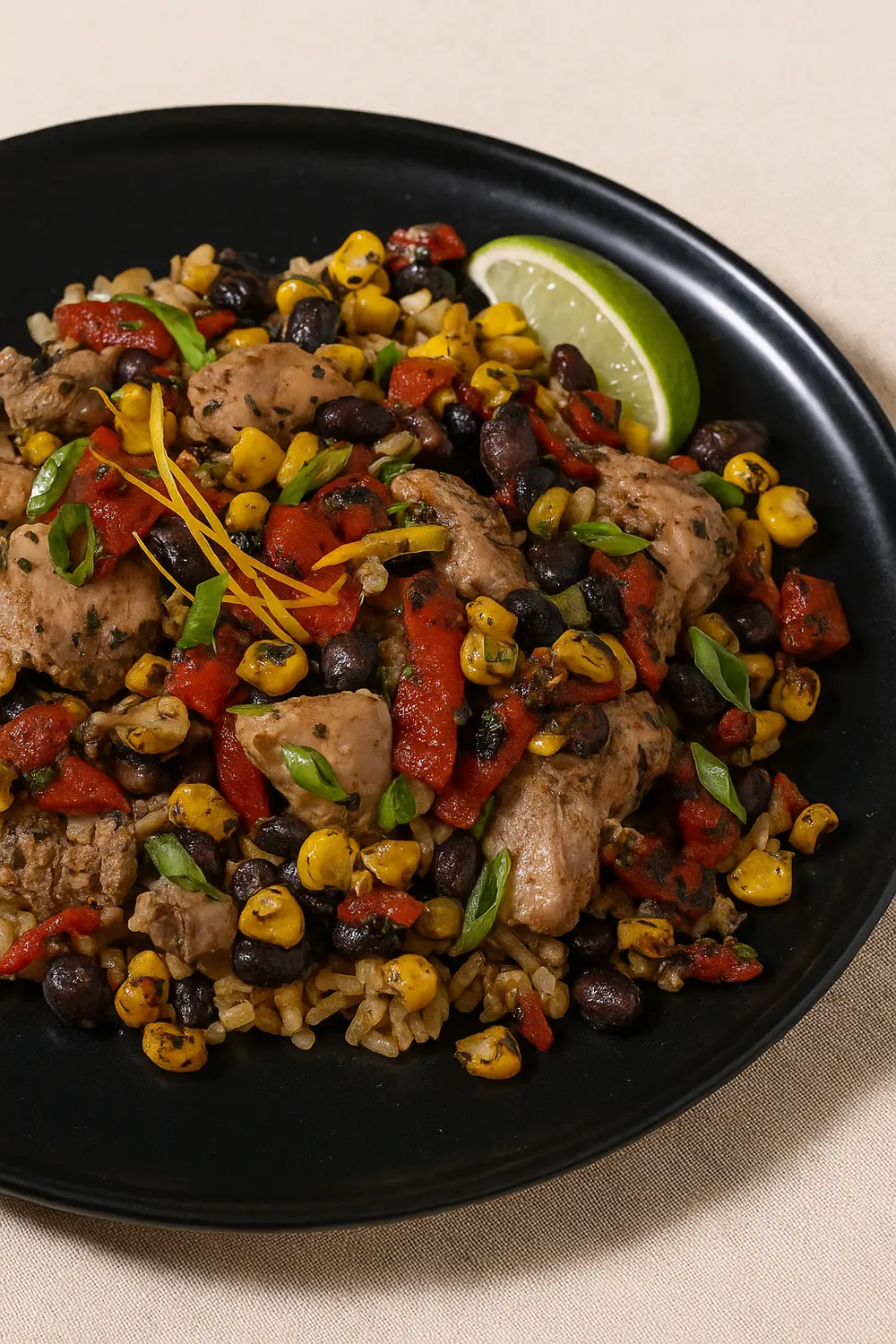
Day 2
Breakfast:
- Sweet Potato Breakfast Hash with Limoncello Vinaigrette: A colorful breakfast hash made with roasted sweet potatoes, peppers, and onions, drizzled with a zesty limoncello vinaigrette, a naturally gluten free breakfast.
Lunch:
- Korean Cucumber Salad: A refreshing Asian cucumber salad featuring fresh cucumbers tossed in a spicy, tangy dressing of sesame oil, garlic, and chili flakes, perfect for those on a gluten-free diet.
Dinner:
- Green Chile Pork with Southwest Salsa: Smoky shredded pork simmered in a green chile sauce and paired with a zesty black bean and corn salsa, and accented with fresh cilantro, lime, and cumin.
Snacks:
- Hummus & Veggies: Carrot sticks, cucumber slices, and bell pepper strips dipped in hummus, a classic gluten-free snack full of fiber.
- Strawberries and Cream Cheesecake: A creamy cheesecake swirled with fresh strawberries and topped with a smooth cream layer. Naturally gluten-free and perfectly indulgent.
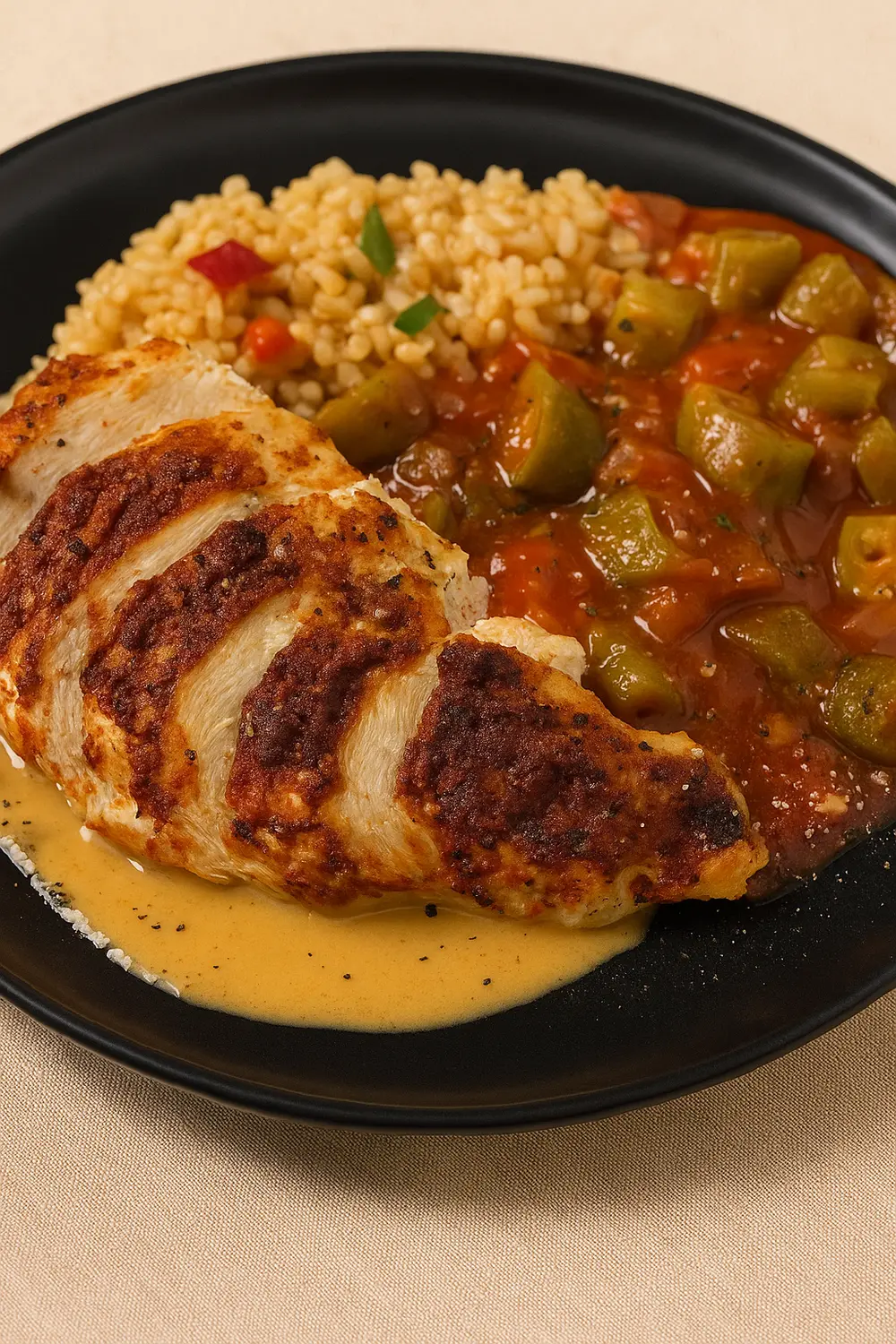
Day 3
Breakfast:
- Veggie Egg Scramble: Sautéed bell peppers, spinach, and onions mixed with whisked eggs, served with a side of roasted herbed potatoes, for a delicious gluten-free breakfast.
Lunch:
- Lamb Rogan Josh: A traditional Indian curry with slow-cooked lamb simmered in a rich, aromatic sauce of tomatoes, yogurt, and warming spices like cardamom and cloves. Served with plain basmati rice for a gluten-free meal.
Dinner:
- Blackened Chicken with Creamy Smoked Paprika Sauce: This Cajun-inspired dish features tender blackened chicken breast draped in a creamy smoked paprika sauce, served alongside spiced brown rice, okra stew, sautéed bell peppers, and onions.
Snacks:
- Trail Mix: Homemade mix of pumpkin seeds, sunflower seeds, unsweetened coconut flakes, and raisins. (Portable and nut-free if needed.)
- Vanilla Bean Cheesecake: Rich and smooth cheesecake infused with real vanilla bean for an elegant, classic dessert that’s both satisfying and gluten free.
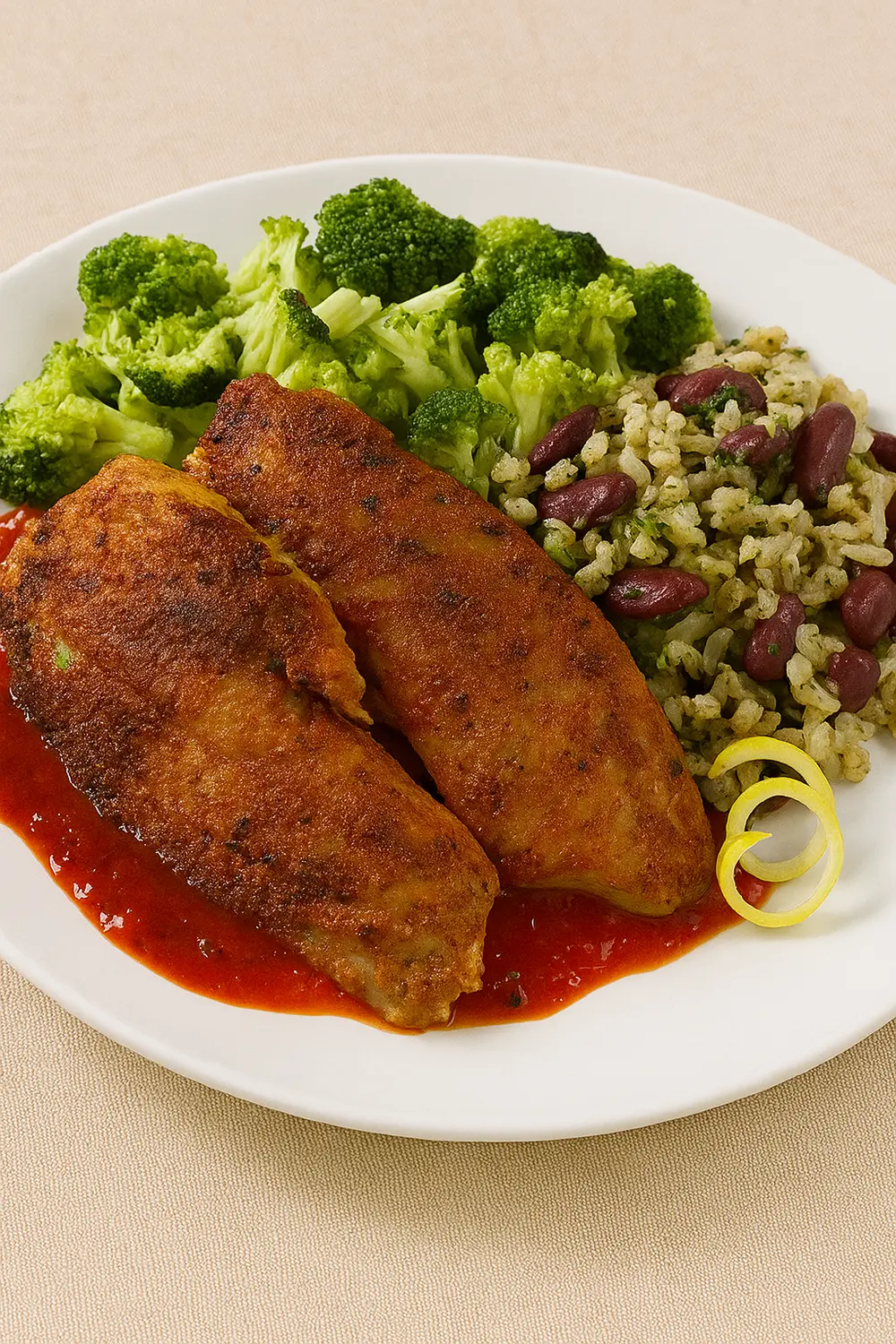
Day 4
Breakfast:
- Canadian Bacon and Swiss Omelet: Fluffy eggs folded around Canadian bacon and melted Swiss cheese, served with a side of roasted vegetables for a hearty, protein-packed breakfast.
Lunch:
- Mediterranean Greek Salad: A crisp, refreshing salad of cucumbers, tomatoes, red onion, and Kalamata olives, topped with feta cheese and a drizzle of olive oil and oregano. Perfect as a light gluten free lunch meal or side.
Dinner:
- Blackened Tilapia with Red Pepper Coulis: Flaky blackened tilapia seasoned with Cajun spices and topped with a smooth roasted red pepper coulis. Served over red beans and brown rice with a side of bright green broccoli florets.
Snacks:
- Apple with Nut Butter: Sliced apple with peanut or almond butter for dipping. (Sweet and creamy snack.)
- Salted Caramel Pecan Bar: A decadent treat featuring a nutty pecan base topped with gooey salted caramel. Sweet, salty, and perfectly chewy for a gluten free dessert.
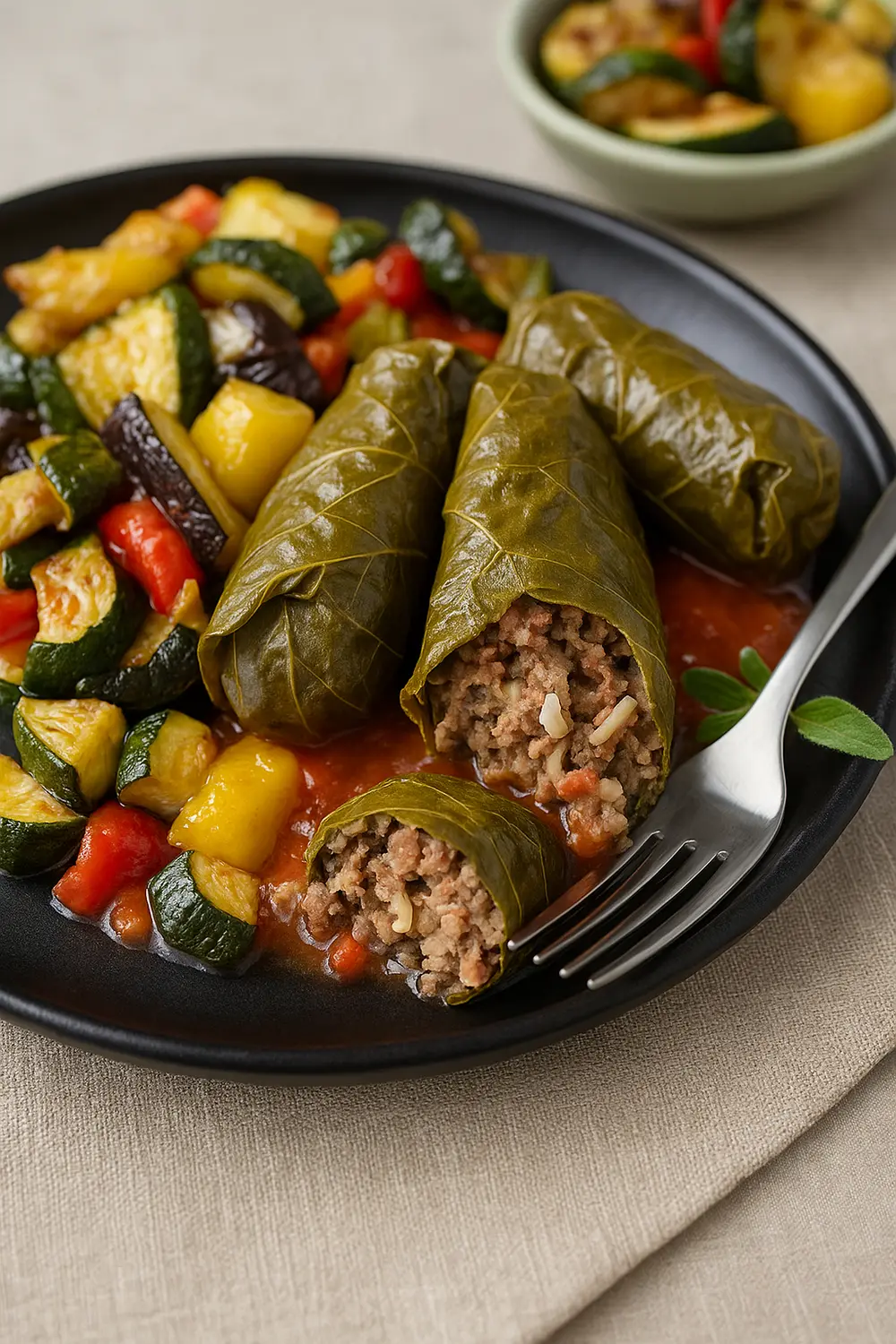
Day 5
Breakfast:
- Southwestern Style Chicken Omelet: A savory omelet filled with grilled chicken, sautéed peppers, onions, and a touch of chili spice, topped with fresh salsa for a bold Southwestern flavor.
Lunch:
- Keto Ground Beef Stir Fry: A protein-packed stir fry of tender ground beef with crisp zucchini, sweet bell peppers, and juicy cherry tomatoes, and finished with plain feta and parsley, for a low-carb gluten free meal.
Dinner:
- Beef Stuffed Grape Leaves with Tomato Sauce: Greek-inspired grape leaves filled with seasoned beef and herbs, topped with a rich basil tomato sauce, and served alongside roasted Mediterranean vegetables.
Snacks:
- Edamame: Lightly salted steamed edamame pods. (Protein-rich and addictive.)
- Chocolate Peanut Butter Bites: Little balls of peanut butter coated in dark chocolate (homemade by freezing peanut butter and dipping in melted chocolate).
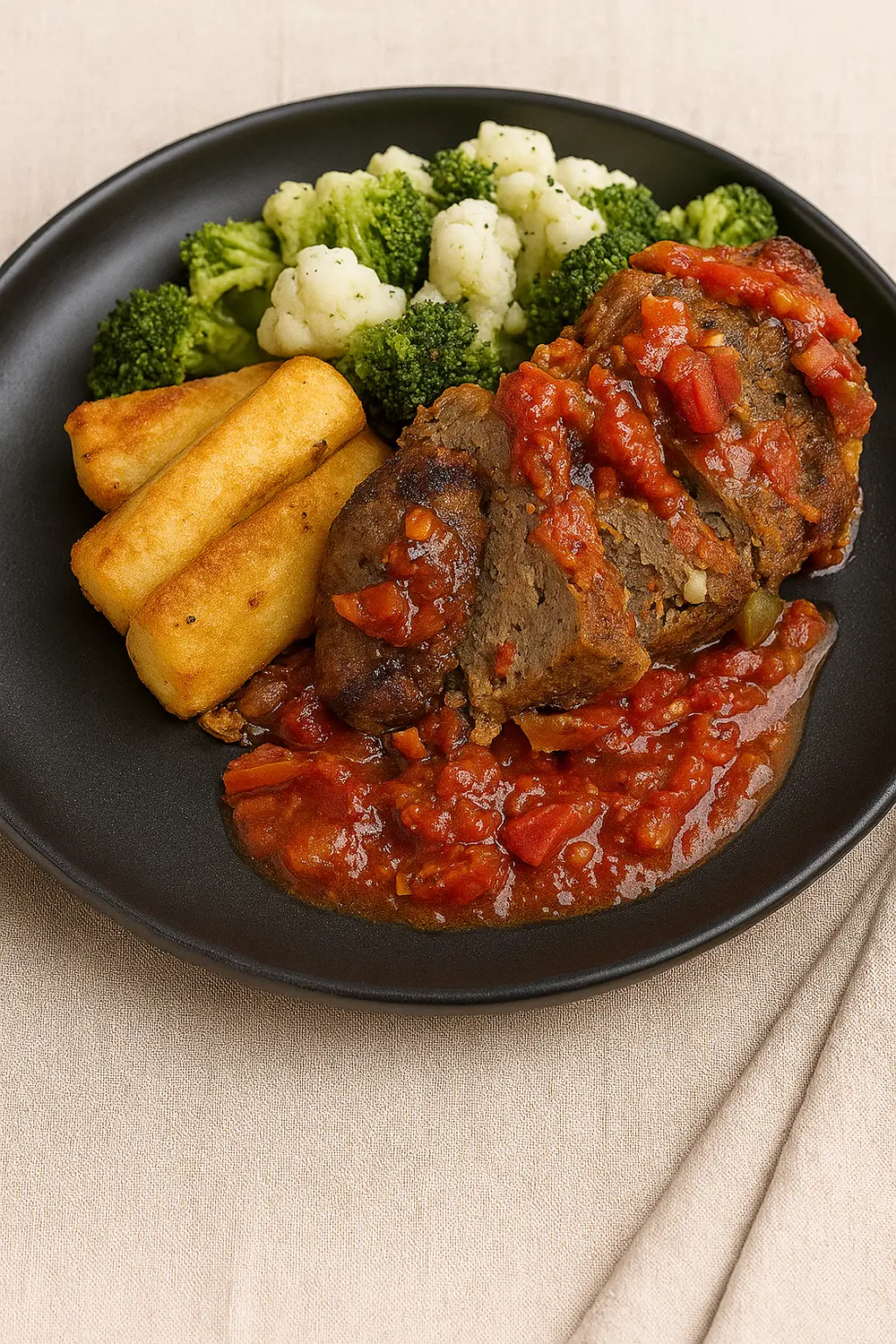
Day 6
Breakfast:
- Artichoke, Spinach & Red Pepper Egg Frittata: A fluffy Italian egg frittata packed with artichokes, roasted red peppers, spinach, and feta cheese, topped with sautéed spinach and paired with savory turkey sausage on the side.
Lunch:
- Creamy Tarragon Chicken: Pan-seared chicken breasts topped with a silky tarragon cream sauce, served with roasted seasonal vegetables and brown rice for a delicious gluten free lunch meal.
Dinner:
- Bacon Cheeseburger Meatloaf with Yuca Fries: Bacon cheeseburger meatloaf topped with smoky tomato-bacon jam and paired with roasted broccoli and cauliflower, and served with gluten free golden yuca fries.
Snacks:
- Raw Power Mix: A wholesome snack mix of nuts, seeds, and dried fruits, high in protein and fiber, ideal for quick energy throughout the day.
- Frozen Yogurt Bark: Greek yogurt spread on a tray, topped with blueberries and chopped almonds, then frozen and broken into pieces.
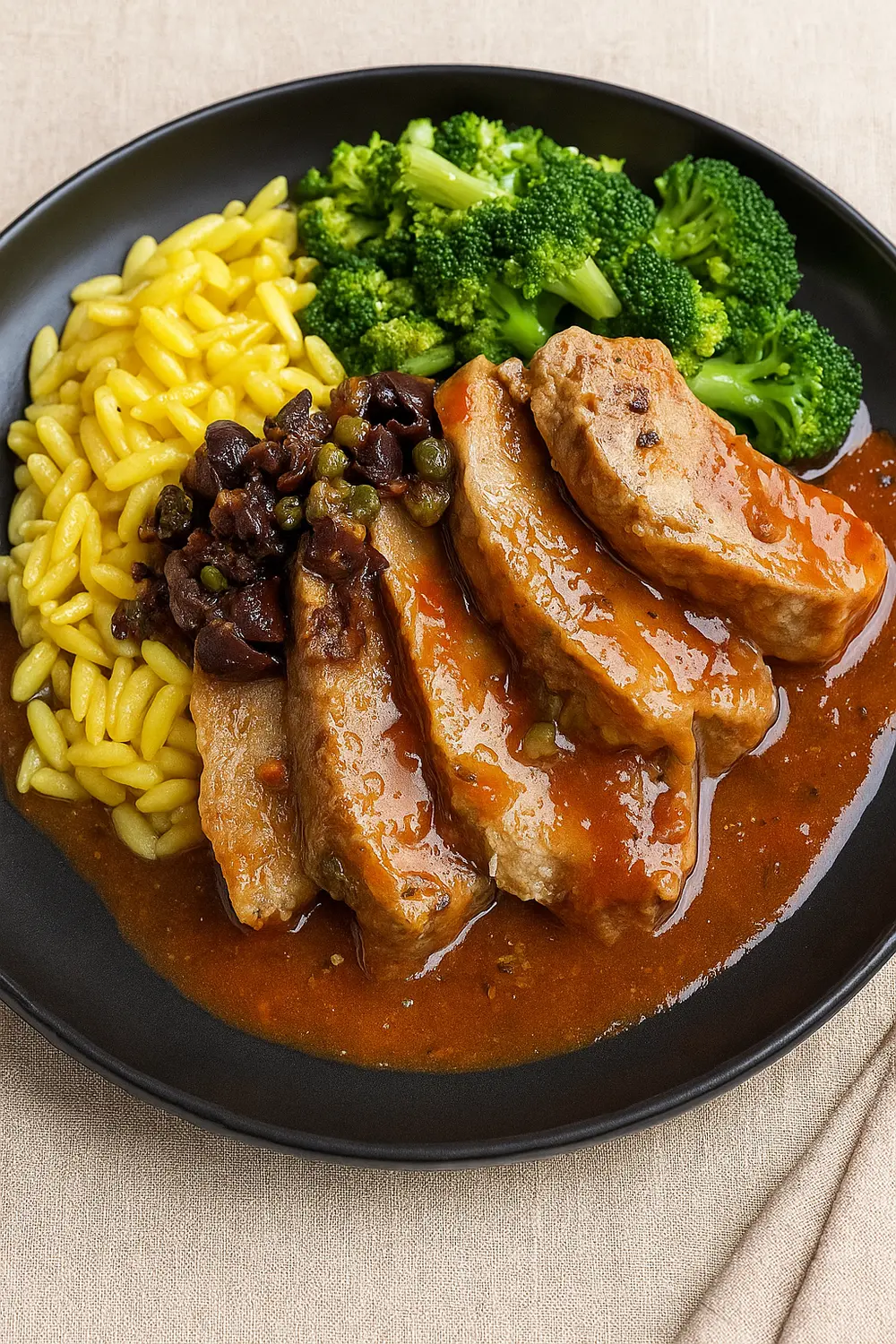
Day 7
Breakfast:
- Tofu Scramble: Crumbled tofu sautéed with turmeric, spinach, and mushrooms, served with a side of sweet potato hash (diced sweet potato fried with herbs).
Lunch:
- Pork Tenderloin with Olive Tapenade: Juicy slow-roasted pork tenderloin paired with a briny olive tapenade of Kalamata and Manzanilla olives, capers, and olive oil. Served with fragrant saffron brown rice and crisp steamed broccoli.
Dinner:
- Oven Braised Lamb Shanks: Fall-off-the-bone lamb shanks braised slowly in a red wine and herb sauce until tender. Paired with roasted root vegetables and plain rice.
Snacks:
- Dried Chicken Breast with Mango: Lean chicken breast paired with sweet, ripe mango slices for a refreshing balance of savory and sweet.
- Rice Cakes with Toppings: Gluten-free rice cakes topped with mashed avocado or a thin layer of nut butter.
Gluten Free Foods List
A common question is “What can I eat on a gluten-free diet?” The good news is, almost all fresh, whole foods are naturally gluten-free. Here are some of the gluten free foods for meal prep:
- Fruits and Vegetables: All fresh fruits and vegetables are naturally gluten-free. Stock up on berries, leafy greens, citrus, bananas, apples, carrots, broccoli, peppers, and anything you like.
- Meat, Poultry, Fish: All unprocessed fresh meats, poultry, and seafood are gluten-free. This includes chicken, turkey, beef, pork, lamb, salmon, shrimp, and so on. (Be cautious with processed meats, see below.)
- Eggs and Dairy: Plain eggs, milk, yogurt, cheese (most cheeses), and butter are gluten-free. Enjoy scrambled eggs or omelets for a gluten free breakfast, Greek yogurt for a snack, or a cottage cheese and fruit bowl.
- Beans, Legumes, Nuts, Seeds: In their natural forms, beans (like black beans, chickpeas, lentils), lentils, peas, nuts (almonds, walnuts, peanuts), seeds (chia, flax, pumpkin) are gluten free.
- Gluten Free Flours: There are also flours made from these gluten-free grains and others, which allow you to bake and cook. Common gluten-free flours include rice flour, almond flour, coconut flour, garbanzo bean (chickpea) flour, potato starch, tapioca flour, sorghum flour, and more.
- Dairy Alternatives: Unsweetened nut milks (almond milk, coconut milk), soy milk, and other dairy substitutes are safe if labeled gluten-free. Check labels for additives like malt flavor.
- Herbs, Spices, Oils: Pure herbs and spices, olive oil, avocado oil, and coconut oil are all gluten-free. (Watch out for spice mixes or sauces that might have hidden gluten.)
Gluten Free Grains and Starches
Many gluten free recipes use these ingredients to stand in for wheat. Here are some gluten free grains and starches you’ll likely want to include in your gluten free meal prep:
- Rice: White, brown, basmati, jasmine, wild rice, all are gluten-free and delicious. Use rice in stir-fries, bowls, as a side, or in soups.
- Corn: Cornmeal, polenta, and popcorn are gluten-free. Corn tortillas and popcorn are great gluten free foods.
- Quinoa: A protein-rich seed often used like a grain. Great for salads or as a side.
- Oats (if certified GF): Oats themselves contain no gluten protein, but are often processed with wheat. Choose oats labeled gluten-free for safe use in oatmeal or baking.
- Millet, Sorghum, Amaranth, Teff: These are lesser-known but nutritious. Sorghum and millet work in pilafs; teff is used in Ethiopian injera (there are GF injera mixes).
- Potatoes and Sweet Potatoes: Naturally gluten-free and nutritious starches.
- Beans and Lentils: Though not grains, they provide starch and fiber (e.g., lentil pasta is gluten-free).
Foods that Contain Gluten
The main gluten-containing foods are:
- Wheat and Wheat Products: This covers most flour-based items. Examples include bread, crackers, muffins, cakes, pasta, cookies, crackers, pizza, cereals, couscous, bulgur, farro, semolina, spelt, durum, graham flour, and many more. Even whole-grain wheat bread or wheat berries are off-limits.
- Barley: Found in malt, malt vinegar, beer, and certain soups or broths. Malt (malted barley syrup or malt vinegar) is a hidden gluten source in some condiments and candies.
- Rye: Found in rye bread, rye beer, and some cereals.
- Triticale: A hybrid of wheat and rye, found in some specialty breads or cereals.
- Oats (unless certified): Oats themselves don’t have gluten, but almost all oats are processed alongside wheat, so if you eat oats, look for “gluten-free oats” labeling.
- Other Glutinous Grains: Couscous (made from semolina wheat), wheat germ, wheat bran.
- Hidden Sources: Watch for ingredients like dextrin, maltodextrin, malt extract, brewer’s yeast, hydrolyzed vegetable protein, hydrolyzed plant protein, and “natural flavors.” Also, avoid anything labeled “wheat-based” (even if processed).
Gluten-Free Substitutes and Alternatives
The good news is that many favorite foods have gluten-free versions or alternatives. Here are some common substitutions:
- Bread and Tortillas: Look for gluten free bread or tortillas made from rice flour, corn flour, almond flour, or tapioca flour. They’re often sold in the freezer section (since GF breads can go stale quickly).
- Pasta: Choose pasta made from rice, corn, quinoa, or lentils. Gluten-free pasta is widely available in grocery stores.
- Flours for Baking: Use almond flour, coconut flour, rice flour, or GF all-purpose flour blends instead of wheat flour. Mixing several GF flours often yields a better texture.
- Cereals and Breakfast Foods: Many cereals now have GF versions. Gluten-free oats can be used for oatmeal; cornflakes without malt, rice crisps, or quinoa cereals are options.
- Crackers and Snacks: There are gluten-free crackers, pretzels, and chips (look for those labeled GF). Rice cakes and corn chips (plain tortilla chips) are safe.
- Snack Bars and Cereals: Many snack bars are GF (e.g., KIND bars, Larabars). Always check labels.
- Beer and Alcohol: Regular beer is made from barley and is unsafe. Drink gluten-free beer (made from sorghum, rice, or barley with gluten removed) or wine, cider, or distilled spirits.
- Desserts: Many dessert recipes can be made GF. For example, brownies with almond flour, or cookies with GF flour blends. Ice cream and sorbets are usually GF (watch out for mix-ins like cookie dough).
- Condiments: Tamari is a GF alternative to soy sauce. Most vinaigrettes, ketchup, salsa, and mustard are naturally gluten-free, but always check ingredients for hidden malt or wheat starch.
Final Thoughts
Starting a gluten free diet can feel overwhelming at first, but with the right approach, it becomes much easier to stay on track.
Our 7-day gluten free diet plan features delicious and easy gluten free recipes and meals that are perfect for beginners and seniors with celiac disease and gluten sensitivity or wheat allergy.
Having a gluten free food plan or gluten free menu plan helps you avoid hidden foods that contain gluten while keeping your meals exciting.
So, use this gf diet plan as your starting point, adapt it to your lifestyle, and enjoy the journey toward healthier, more mindful eating.
You may also be interested in these diet plans;
- Free calorie deficit meal plan
- Ozempic diet for beginners
- GLP 1 meal plan for Mounjaro
- Healthy diet plan for weight loss
- 7-day rice diet meal plan
- Low carb high protein meals for beginners
- Weekly meal plan for family
- 30-day carnivore dirt for beginners
- High protein diet for beginners
- 7 day carb cycling for women
- 1200 calorie meal plan
FAQs
Who needs to follow a gluten free diet?
People diagnosed with celiac disease must follow a strict gluten free diet for life to prevent intestinal damage and symptoms.
Others with non-celiac gluten sensitivity or a wheat allergy may also choose a gluten-free diet to avoid discomfort.
What happens to your body when you start eating gluten-free?
When you start eating gluten-free, your body may experience reduced bloating, improved digestion, and more energy, especially if you have celiac disease or gluten sensitivity.
Will I lose weight if I stop eating gluten?
Not everyone loses weight on a gluten free diet. Weight loss may happen if you replace high-calorie foods that contain gluten with healthier gluten free foods like vegetables, lean proteins, and gluten free grains.
What are the best gluten-free snacks?
The best gluten-free snacks include fresh fruit, nuts, rice cakes, popcorn, cheese sticks, gluten free bread with nut butter, veggie sticks with hummus, and homemade gluten free appetizers like mini frittatas or energy bites.
What is a gluten belly?
A gluten belly refers to bloating, gas, and abdominal discomfort caused by eating foods that contain gluten, especially in people with celiac disease or gluten sensitivity.

